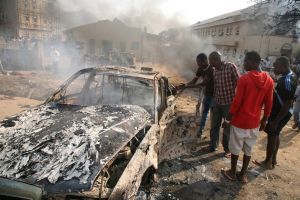Respiratory virus surging in China raising concerns about new global pandemic

Cases of respiratory illnesses are surging in northern China, especially among children, raising global concerns about a potential new pandemic threat, four years after the emergence of COVID-19 in the country. Chinese health authorities claim the increase is due to a mix of known viruses, coinciding with the country’s first full cold season post the lifting of strict COVID restrictions last December.
On Nov. 13, China’s National Health Commission reported a significant rise in respiratory illnesses, predominantly in children, according to France 24, which, citing authorities, said the increase was linked to the end of COVID restrictions, the onset of the cold season and the circulation of known pathogens, including influenza, mycoplasma pneumonia, respiratory syncytial virus (RSV) and SARS-CoV-2.
Last Monday, ProMED, a public disease surveillance system, highlighted overwhelmed hospitals in Beijing and northeastern Liaoning province due to a pneumonia outbreak. Symptoms observed include fever, lung inflammation without a cough and pulmonary nodules, with no reported deaths.
Several parents at a Beijing children’s hospital confirmed their children had mycoplasma pneumonia, or “walking pneumonia,” a treatable bacterial infection common in children. Similar surges in diseases like RSV and flu were observed in the U.K. and U.S. post-pandemic restrictions, The Telegraph noted. Symptoms of walking pneumonia include sore throat, fatigue and a lingering cough, which can deteriorate into pneumonia in severe cases.
However, the World Health Organization, recalling Beijing’s past opacity during the COVID pandemic, has sought more details from China about these “undiagnosed pneumonia” cases, France 24 said, adding that Beijing assured that no unusual or novel pathogens were detected.
The WHO noted the expected increase in such illnesses with winter’s arrival.
Experts like Francois Balloux from University College London and Paul Hunter from the University of East Anglia suggest the surge is likely due to the end of COVID restrictions and a lack of prior immunity in children. Catherine Bennett from Deakin University in Australia highlighted the reduced exposure of young children in China to common pathogens due to prolonged lockdowns, impacting their immunity levels.
The WHO advises people in affected areas to follow standard precautions against respiratory illnesses, including vaccination, isolation if symptomatic and testing or mask-wearing as needed. It currently advises against travel restrictions to China.
Local media last month reported nationwide hospital increases in infections, often clustered in schools and nurseries, according to the Telegraph. Zhou Huixia of the Chinese PLA General Hospital noted a fierce wave of mycoplasma pneumoniae infections, with more patients showing mixed infections and drug resistance, the newspaper said, adding that Li Yuchuan from Beijing Children’s Hospital described a high level of pediatric respiratory diseases throughout the year, with multiple peaks linked to various pathogens.
The recent surge has also raised concerns about growing antibiotic resistance, as mycoplasma pneumonia increasingly evades macrolides, a preferred treatment class.
The British newspaper cited a February 2022 study, which found macrolide resistance in over 80% of mycoplasma pneumonia cases in hospitalized children in China. However, Chinese experts emphasize the low mortality rate, with few critical cases and no related deaths reported so far.
Some social media images, unverified, show children in schools with intravenous lines, The Times said.
Paul Hunter, professor in medicine at the University of East Anglia, commented on the difficulty in diagnosing the cause but suggested a bacterial rather than viral infection, given the symptoms and pulmonary nodules observed. The predominance of cases in children suggests it’s unlikely a new viral respiratory pathogen, Hunter said.
François Balloux from the UCL Genetics Institute referred to the phenomenon as “immunity debt,” a consequence of the prolonged lockdown in China suppressing the circulation of respiratory bugs and hence decreasing immunity to endemic bugs.





























